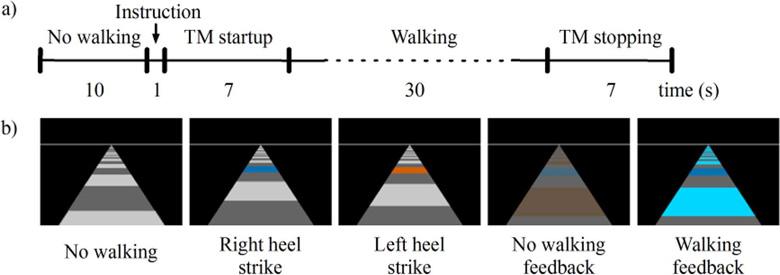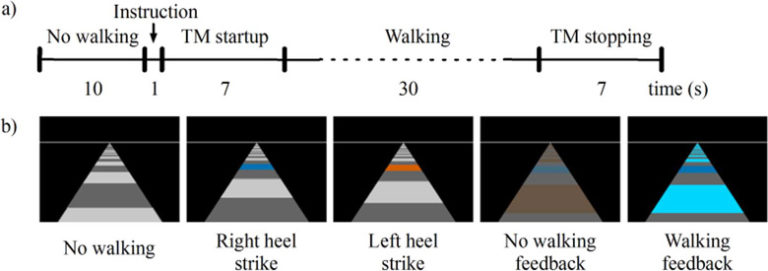
Recently, brain–computer interface (BCI) research has extended to investigate its possible use in motor rehabilitation. Most of these investigations have focused on the upper body. Only few studies consider gait because of the difficulty of recording EEG during gross movements. However, for stroke patients the rehabilitation of gait is of crucial importance. Therefore, this study investigates if a BCI can be based on walking related desynchronization features. Furthermore, the influence of complexity of the walking movements on the classification performance is investigated. Two BCI experiments were conducted in which healthy subjects performed a cued walking task, a more complex walking task (backward or adaptive walking), and imagination of the same tasks. EEG data during these tasks was classified into walking and no-walking. The results from both experiments show that despite the automaticity of walking and recording difficulties, brain signals related to walking could be classified rapidly and reliably. Classification performance was higher for actual walking movements than for imagined walking movements. There was no significant increase in classification performance for both the backward and adaptive walking tasks compared with the cued walking tasks. These results are promising for developing a BCI for the rehabilitation of gait.

